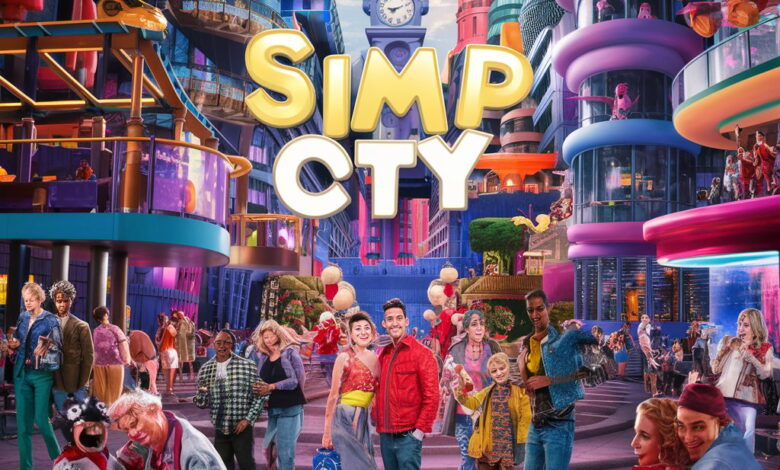Simp City SU: Exploring the Controversial Online Phenomenon

Introduction
The internet has birthed countless subcultures, but few are as polarizing as Simp City SU a digital ecosystem where admiration, obsession, and financial devotion collide. Emerging from the broader “simp” culture, which describes individuals (often men) who excessively praise or financially support online personalities (typically women), Simp City SU has become a hub for extreme parasocial relationships. This article delves into the origins of Simp City SU, its cultural impact, the psychology behind simping, the controversies surrounding it, and its place in the evolving landscape of online interactions. Whether viewed as harmless fandom or problematic behavior, Simp City SU offers a fascinating case study in modern digital devotion.
1. The Origins of Simp City SU: From Meme to Subculture
The term “simp” has roots in early 2000s hip-hop slang, where it described men perceived as overly submissive in romantic pursuits. By the late 2010s, the word was reclaimed as an ironic meme, mocking exaggerated displays of online admiration. Simp City SU evolved as a niche offshoot, particularly on platforms like Twitch, TikTok, and Discord, where communities formed around showering streamers and influencers with money, gifts, and hyperbolic compliments. The “SU” (often shorthand for “Simp University” or “Simp Society”) suggests a semi-organized, almost institutionalized approach to simping, complete with in-jokes, hierarchies, and shared rituals like competitive donation battles during livestreams.
2. The Psychology of Simping: Why Do People Engage?
At its core, Simp City SU thrives on parasocial relationships—one-sided connections where fans invest emotionally (and financially) in creators who don’t know them personally. Psychologists attribute this behavior to a mix of loneliness, the dopamine rush of online validation, and the illusion of intimacy fostered by platforms like OnlyFans or Patreon. For some, simping is a form of escapism; for others, it’s a performance to gain status within the community. The transactional nature (“donate for a shoutout”) blurs lines between fandom and commodified affection, raising questions about emotional exploitation. Yet, participants often defend it as harmless fun, a modern extension of buying a celebrity’s merch or concert ticket.
3. The Ecosystem of Simp City SU: Platforms, Personalities, and Economics
Simp City SU isn’t confined to one corner of the internet. On Twitch, simps flood chat with donations to “protect” streamers from trolls. On TikTok, they dominate comment sections with flirtatious praise. OnlyFans and Instagram monetize the dynamic further, with creators offering exclusive content in exchange for subscriptions. The economy is staggering: top influencers earn thousands monthly from simp-driven tips, while platforms take a cut. Some creators actively cultivate simp followings through “pay-to-play” interactions (e.g., personalized DMs for high donors), while others distance themselves, wary of the stigma. The ecosystem’s sustainability hinges on this uneasy balance between encouragement and exploitation.
4. Controversies and Criticisms: The Dark Side of Simp Culture
Critics argue Simp City SU normalizes unhealthy behavior, from financial irresponsibility (maxing out credit cards for virtual attention) to reinforcing gendered stereotypes (the “desperate male fan” trope). High-profile scandals, like simps bankrupting themselves for influencers who later block them, fuel moral panics. Others highlight the racial dynamics—Black creators, for instance, are often stereotyped as “gold diggers” when accepting simp donations, while white influencers face less scrutiny. Meanwhile, feminists debate whether simping empowers women or reduces them to transactional objects. The subculture’s irony-poisoned humor (“I’m a proud simp!”) further complicates these discussions, making it hard to distinguish satire from sincerity.
5. Simp City SU and the Future of Online Fandom
As internet culture evolves, Simp City SU reflects broader shifts in how we seek connection and validation digitally. Platforms are increasingly gamifying admiration (e.g., TikTok’s “virtual gifts”), while creators walk a tightrope between engaging simps and maintaining authenticity. Some predict a backlash, with stricter regulations on monetized parasocial relationships. Others believe simping will morph into new forms, like crypto-fueled “NFT fandoms.” Whatever the future holds, Simp City SU underscores a timeless truth: the internet doesn’t invent human desires—it just monetizes them in weird new ways.
FAQ: Common Questions About Simp City SU
Q1: Is simping always about romantic attraction?
A: Not necessarily. While often framed romantically, simping can also stem from platonic idolization (e.g., donating to a favorite artist).
Q2: Are women ever “simps”?
A: Yes, though the term is disproportionately applied to men. Female fans of male creators exhibit similar behaviors (see: “K-pop stans”).
Q3: Do creators take advantage of simps?
A: Some do, but many set boundaries. Ethical concerns arise when creators foster dependency for profit.
Q4: Can simping be positive?
A: In moderation, supporting creators you admire is fine. Problems start when it becomes obsessive or financially reckless.
Q5: How can you avoid “simp toxicity”?
A: Set spending limits, recognize one-sided relationships, and diversify your offline social connections.
Conclusion
Simp City SU is a mirror held up to the internet’s id—a space where vulnerability, humor, and capitalism collide. While it’s easy to dismiss it as cringe or pathological, its persistence reveals deeper truths about isolation and the human need for recognition in the digital age. Whether it’s a passing trend or a lasting fixture of online culture, one thing is clear: where there’s attention to be commodified, there will always be a Simp City SU waiting to welcome its citizens.



